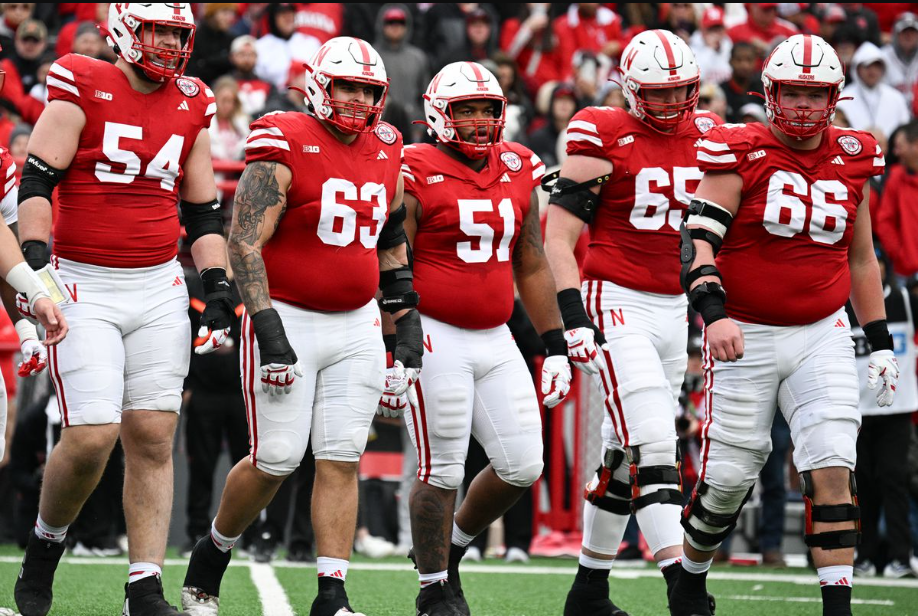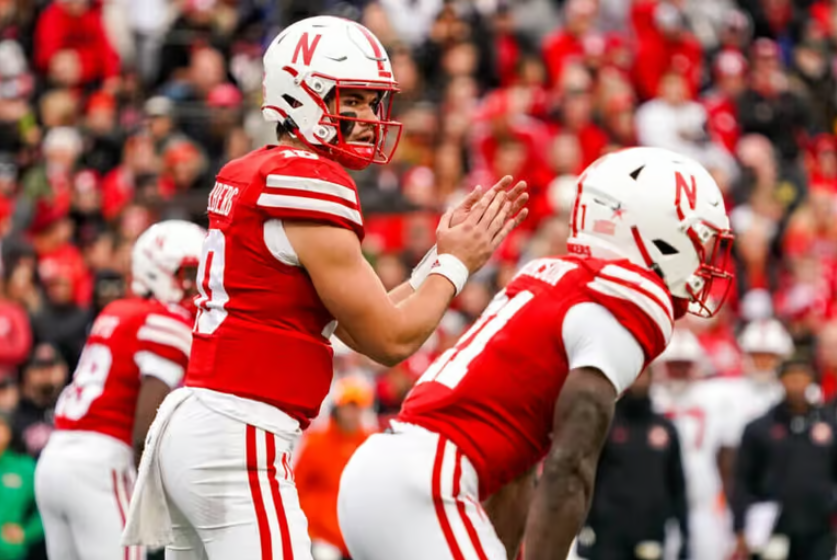

In the calm of a Nebraska summer, a few weeks ago, Matt Rhule took a moment of reflection in the new Osborne Legacy Complex, perched above the weight room on the cardio deck. Rhule, known for his intense focus and drive, was engaging in what he humorously referred to as an “old man walk” on a treadmill. As he walked, he gazed out through the expansive windows of the facility, observing the ongoing drills on the practice fields below. What he saw was more than just a training session; it was a reflection of the substantial progress and evolving culture within the Nebraska football program.
From his vantage point, Rhule witnessed the offensive and defensive line drills in full swing. What struck him was the sight of the veteran players taking charge of the drills. Instead of the coaches leading the sessions, it was the older, more experienced players who were stepping up to guide and instruct their teammates. This moment was particularly significant to Rhule, as it underscored the maturation and leadership developing within the team. It was a clear sign that the players were taking ownership of their roles and contributing to the team’s growth beyond just executing plays on the field.
Rhule’s observation was more than just a casual remark; it was a testament to the strides made since he took over as head coach. The development of player-led leadership is often a critical indicator of a successful program. It suggests that the players are not only absorbing the coaches’ instructions but are also internalizing and applying those lessons in a way that enhances overall team cohesion and performance. For Rhule, seeing this shift in responsibility was a gratifying confirmation of the positive direction the program is heading.
As the fifth practice of preseason camp approached, Rhule reflected on the team’s progress and was enthusiastic about the advancements made since the previous year. He described the current state of the team as being “night and day” ahead of where they were in the previous season. This assessment was a clear acknowledgment of the hard work and improvements made over the offseason. The changes were not merely incremental but rather substantial, indicating a significant transformation in how the team operates and performs.
The significance of the preseason practices extended beyond just internal evaluations. The fourth practice was notably held at Memorial Stadium on a Saturday night, where approximately 3,500 fans gathered to witness the session. Each fan paid $25 to attend the event, which was organized by the 1890 Initiative, a program aimed at supporting Nebraska’s name, image, and likeness (NIL) efforts. This event was not just a practice; it was a strategic move to engage with the fanbase and support the financial aspects of the program through NIL contributions.
The presence of the fans at the practice underscored the strong support and enthusiasm surrounding Nebraska football. It provided a unique opportunity for fans to connect with the team, witness the preparations for the upcoming season, and contribute to the program’s financial needs. The turnout was a clear indication of the community’s dedication to the team and its success. Such events are crucial in bridging the gap between the team and its supporters, creating a sense of involvement and investment in the program’s future.
The practice itself was a showcase of the team’s preparation and progress. The drills conducted on the turf at Memorial Stadium were a blend of intensity and focus, reflecting the hard work and dedication of both players and coaches. The atmosphere was electric, with fans cheering on their team and showing their support for the upcoming season. The practice served as a public demonstration of the team’s readiness and a preview of what fans could expect in the months ahead.
Rhule’s reflections and the fan engagement at the practice were part of a broader narrative of transformation within the Nebraska football program. The improvements made since last year were not just about physical conditioning and skill development but also about cultivating a winning culture. The emphasis on player leadership, the commitment to rigorous training, and the active involvement of the fanbase all contributed to the program’s evolving identity.
The Osborne Legacy Complex, where Rhule observed the drills, is more than just a facility; it represents a significant investment in the program’s future. The state-of-the-art amenities and resources available in the complex are designed to support the team’s development and enhance their performance. The facility stands as a symbol of the commitment to excellence and the drive to build a successful program.
The preseason practice at Memorial Stadium and Rhule’s observations reflect a positive shift in the Nebraska football program. The emergence of player-led leadership, the substantial progress made since last year, and the strong fan support all contribute to a sense of optimism and excitement for the upcoming season. The combination of these factors suggests that Nebraska football is on a promising trajectory, with the potential for a successful and impactful season ahead.

Leave a Reply